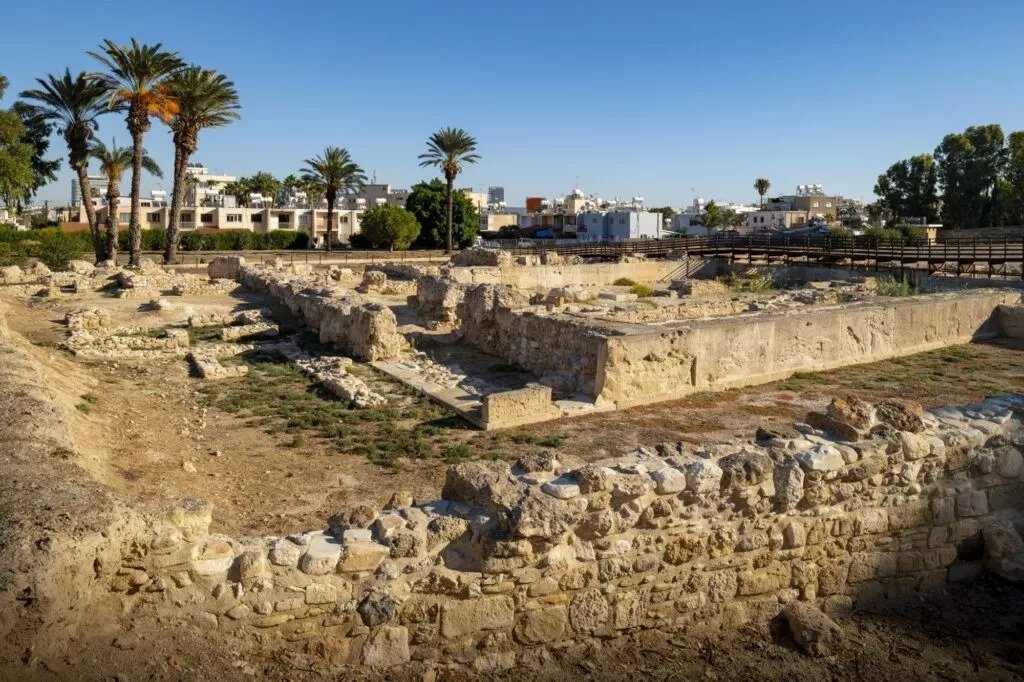Three cities built thousands of years ago continue to shed light on aspects of the history of Larnaca, providing information about the lives of its ancient inhabitants. Excavations have been ongoing for many decades at the sites where these cities are buried, conducted by both the Department of Antiquities and foreign missions.
The findings complement the pieces of a lengthy history, during which Larnaca established itself as one of Cyprus’s most important ports.
These three cities were established during the Late Bronze Age (1600-1050 BCE), characterised as a period of internationalisation and trade development. While the most well-known is the ancient Kition, equally important are the settlements near Hala Sultan Tekke and south of Pyla.
So far, excavations have unearthed a plethora of artefacts from these three cities, with many displayed in the renovated Larnaca Archaeological Museum. According to archaeologists, the simultaneous existence of three urban centres in the coast of Larnaca, situated close to each other, highlights the region’s geopolitical importance.
“These cities, coexisting for a certain period, functioned as ports within a network of settlements specialising in the extraction and processing of copper. Alongside copper export, there was also the import of exotic goods and raw materials into Cyprus. Luxurious imports served as a means to showcase the wealth of the elite society in the region,” stated Dr. Pantelitsa Mylona, an archaeologist at the Department of Antiquities.
Of particular interest to researchers is the relationship between the city of Hala Sultan Tekke and the one created slightly later, known as Kition. While theories abound, the most plausible suggests that when the port in the Tekke area closed, possibly due to salt flats being established there today, the population may have migrated to Kition, contributing to its dramatic development in the 12th century BCE.
Kition
The most famous city of ancient Larnaca is Kition. As Dr. Mylona explains, ongoing excavations target available spaces for archaeological research since the ancient city lies beneath the present one. Scientific excavations in ancient Kition have spanned almost a century, with the first findings coming to light in the 18th century through foreign explorers and tomb raiders.
In 1845, the renowned column of the Neo-Assyrian King Sargon II was discovered, currently in Berlin, with a copy exhibited at the Larnaca Archaeological Museum. Under British rule in 1879, authorities accidentally found various artefacts and inscriptions related to the goddess Astarte during the draining of ponds in the Pampoula area.
Scientific excavations began in 1929 by a Swedish mission, discovering a sanctuary from the classical period in the Pampoula area. The current Archaeological Site of Kition in the Choirokitia region started emerging in 1959 when the Department of Antiquities, under the late Vassos Karageorghis.
“The findings indicate the presence of places of worship related to copper and shipping. Copper workshops and weaving facilities were also identified. The commercial port of the city was located there, while the military port was behind the Archaeological Museum in Pampoula. Excavations in the Salamis area began in 1975 by the French mission,” noted MMylona.
Pyla-Kokkinokremos Site
According to findings, the settlement located on top of a high rocky plateau south of Pyla had the shortest lifespan. Founded in the late 13th century BCE, the settlement appears to have been abandoned in the early 12th century BCE. Mylona mentioned, “The terrain morphology suggests the existence of a small port. Excavations revealed storage spaces for products, industrial activities for copper processing, and weaving workshops. The reasons for abandonment remain unknown, but the discovery of treasures, hidden sets of metal objects, indicates a sudden decision to vacate the site.”
The existence of the settlement came to light in 1952 when vessels were discovered following illegal activities in the area. These discoveries attracted the attention of the archaeologist Porphyrios Dikaios, who conducted a brief excavation in the region. In 1953, Late Bronze Age pithos remains were found, and excavations have continued to this day.
This year, the Department of Antiquities announced that the latest excavation in 2023 brought to light a structure identified four years ago on the slope believed to be the access point to the ancient settlement’s port.






